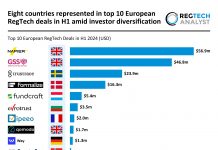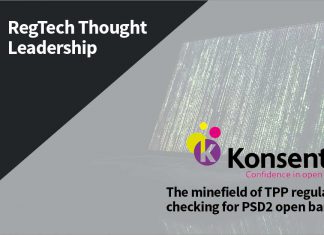The upcoming Artificial Intelligence (AI) legislation, notably the European Parliament’s Artificial Intelligence Act, is poised to redefine the regulatory landscape for financial institutions. Touted as the globe’s inaugural framework for “trustworthy AI,” the act is set to amplify the compliance obligations of anti-money laundering (AML) and anti-fraud teams. However, this impending challenge is mitigated by the availability of purpose-built AI solutions tailored to meet these burgeoning requirements.
HAWK:AI, a RegTech company helping clients manage risk, recently delved into what the EU AI Act means for the prevention of fraud.
The enactment of the AI Act heralds significant implications for AML and fraud prevention operations within the banking sector. The European Commission is contemplating classifying the use of AI in financial services as “high risk” under the AI Act. Although a definitive stance is pending, this classification would undoubtedly intensify the regulatory demands. However, there’s a silver lining for regulated entities: the AI Act’s stipulations largely mirror the expectations of established regulatory bodies like BaFin or FINMA. Consequently, the integration of AI governance aligning with existing risk management frameworks ensures that banks can navigate the new regulations without incurring excessive burdens.
Addressing the stipulations for high-risk AI systems outlined in the AI Act necessitates a robust framework encompassing risk management, data governance, documentation, and transparency. Advanced platforms such as MLFlow and Neptune facilitate the lifecycle management of machine learning models, aligning with the act’s risk management protocols. These platforms enable meticulous tracking of model development stages, fostering a culture of rigorous testing and validation. By fostering such comprehensive oversight, banks can adhere to the risk-based approach mandated by the AI Act.
The AI Act’s emphasis on data quality and governance underscores the pivotal role of these facets in enhancing AI model efficacy. Systems that incorporate rigorous training, validation, and continuous monitoring mechanisms are integral in maintaining data integrity. Similarly, robust technical documentation and record-keeping processes are indispensable for meeting the act’s compliance standards. AI systems that generate comprehensive audit trails and technical documentation ensure that banks maintain a transparent record of AI model functionalities and decision-making processes.
Transparency is a cornerstone of the AI Act, aimed at bolstering the credibility and acceptance of AI systems. Achieving this requires systems that provide lucid, accessible explanations of AI decisions, underpinned by robust audit trails. Moreover, the act mandates human oversight of AI systems, ensuring that the outputs of these systems remain under stringent human control, thereby enhancing risk management efficacy.
Lastly, the act stipulates stringent criteria for the accuracy, robustness, and cybersecurity of AI models. Regular and rigorous testing is imperative for complying with these mandates, guaranteeing that the systems deliver reliable and secure outputs.
Hawk AI stands at the forefront of addressing the AI Act’s demands through its innovative financial crime platform. By embedding explainability and model governance features, Hawk AI ensures that regulated banks can seamlessly comply with the AI regulations. The platform’s integration of risk management processes ensures rapid, precise transaction analysis, minimises false positives, and enhances risk assessment accuracy.
Read the full story here.
Keep up with all the latest FinTech news here.
Copyright © 2024 FinTech Global
Copyright © 2018 RegTech Analyst






